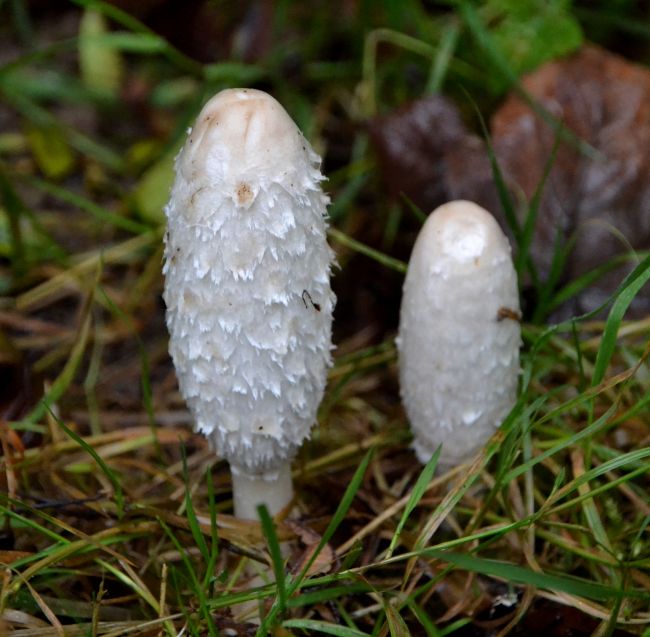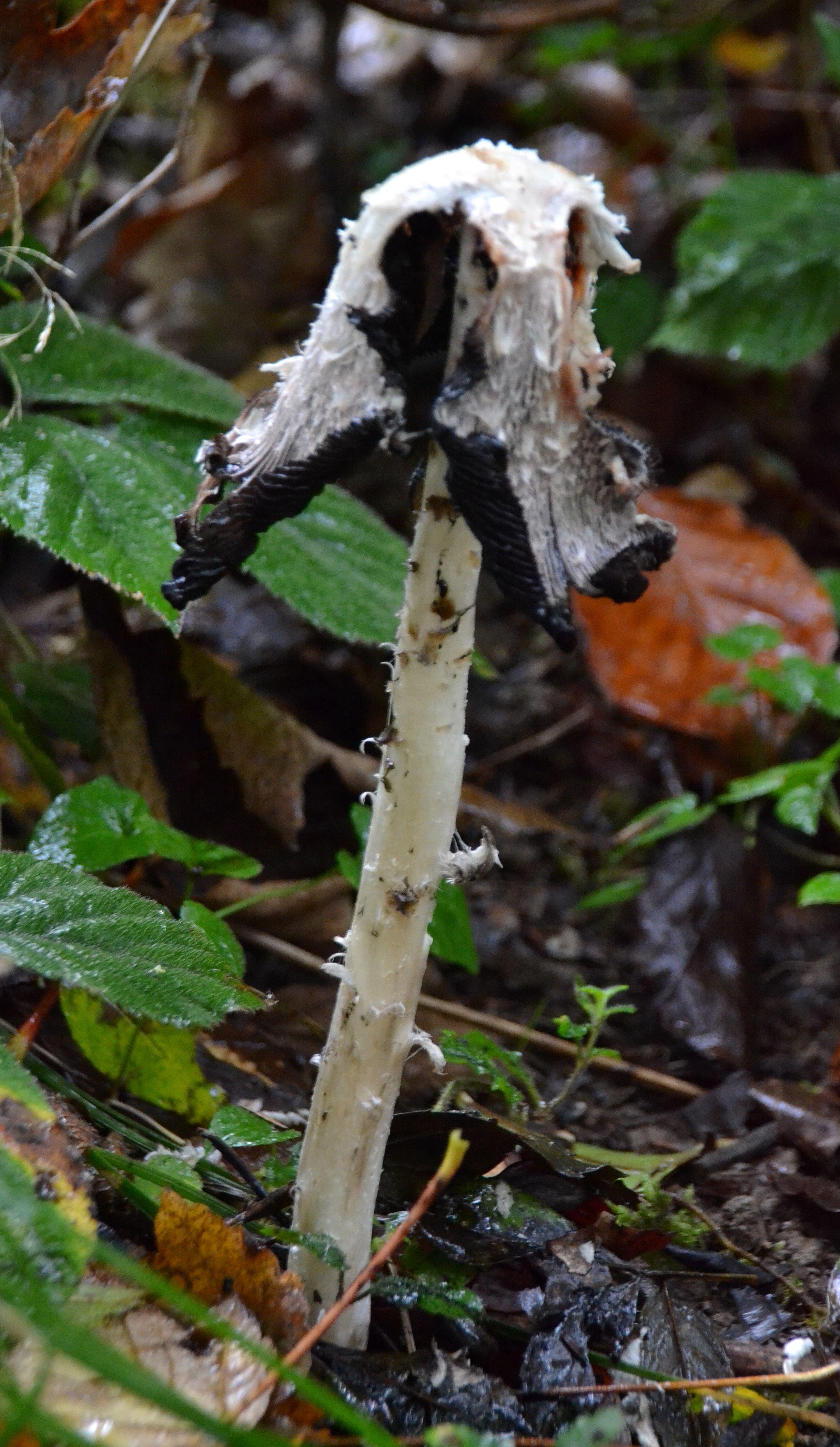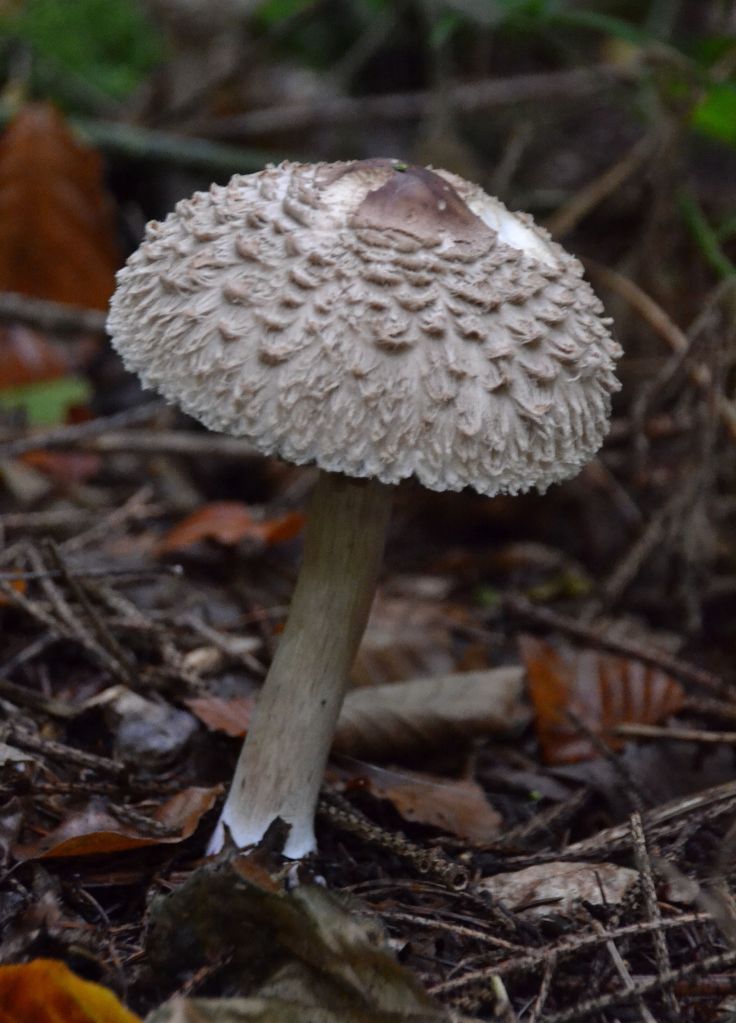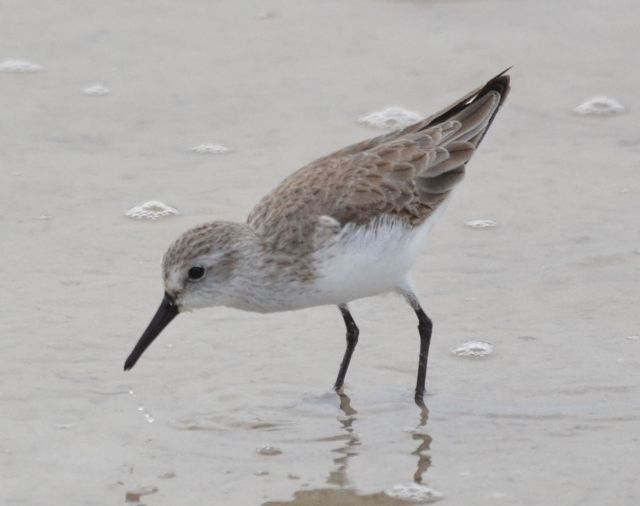As a mycology beginner this arguably most iconic of mushrooms was high on my wish list of species to experience in the present season. These are the bright red pedestals with white spots upon which for long years past faeries have sat cross-legged in children’s book illustrations. And they are still one of the most recognizable and widely encountered fungi of popular culture, including literature, art and film. Worldwide the Fly Agaric (Amanita muscaria) is native to conifer and deciduous woodlands across the northern hemisphere, but I myself had not located any so far this autumn prior to today.
Late morning I received a tip off that huge numbers are currently fruiting at a location to the west of Oxford. North Leigh Common (SP399136) is a remnant of historic heathland that is now managed by West Oxfordshire District Council to maintain a range of wildlife habitats. Amongst the site’s specialities are a splendid annual crop of my wished for mushroom that I set out in the early afternoon to record. To say I wasn’t disappointed is an understatement.
The Fly Agaric (Amanita muscaria) here occur in bracken beneath Silver Birch. On locating such an area there were dozens, probably hundreds of fruiting bodies all around and of various shapes and sizes, so how many thousands there must be across the entire site could only be imagined. As I approached an apparent hot spot, where most of the pictures herein were taken, a first large red shape was visible ahead that upon being reached was indeed a saucer-sized specimen (pictured above). It was lying on one side having fallen so I picked it up wearing a petrol station glove and re-positioned it to photogenic advantage.
This perhaps most conspicuous and iconic of all mushrooms is typically numerous where it occurs, in Beech or coniferous woodland, or in association with Silver Birch as here. Looking around I next sought out specimens in good condition that represented the succession of forms in this mushroom’s fruiting cycle. After emerging from the ground looking like white eggs (below left) the caps become covered with small white to yellow pyramid-shaped warts that thin out as they grow into the medium sized convex form (bottom row) in the following sequence.





As the fruiting body develops and matures the cap shape evolves further from globular through hemispherical and plate-like to flat. Fully grown caps may reach 20 cm in diameter, though still larger specimens are known. The next picture sequence shows three mature specimens (top row). Heavy rain may wash the white spots off eventually (bottom row, left), before like many mushrooms the flatter stage turns up at the edges (bottom left) as the fruit crinkles before ultimately dissolving. Amongst all the pictured items the bracken covered ground was littered with many more deformed, fallen or slug-attacked Fly Agarics.





The Fly Agaric occurs naturally across much of the northern hemisphere and has been introduced widely in Australasia, South Africa and South America. As the bright colouring suggests it is poisonous though not deadly, and also has psycho-active components that cause hallucination and psychotic reactions if digested in small quantities. Indeed it has been used in shamanic rituals in some past northern Fennoscandian and Siberian indigenous cultures, and in ancient times may have been the hallucinogenic ingredient of a sacred ritual drink called Soma in India and Iran.
The only reported past narcotic use in Europe was of being consumed mixed with Vodka during Lithuanian wedding feasts, which sounds pretty potent! But long ago the Vikings were reputed to have used A muscaria to induce their “berserker” rages when going into battle. It is possible to detoxify Fly Agaric but culinary use across its range has been very limited. Since this mushroom contains ibotenic acid that attracts and kills flies it has also been utilised traditionally as an insecticide by breaking up the cap and sprinkling it into saucers of milk, hence the common name.
Cultural depictions have been widespread, such as in children’s faery tales, other literature notably Lewis Carroll’s Alice in Wonderland, the 1940 Disney film Fantasia and the Super Mario video game franchise. Depiction was common on Christmas cards in Victorian and Edwardian times (below) as a symbol of good luck, and Fly Agaric’s colouring is thought to have been the inspiration for Santa Claus’ red and white suit!
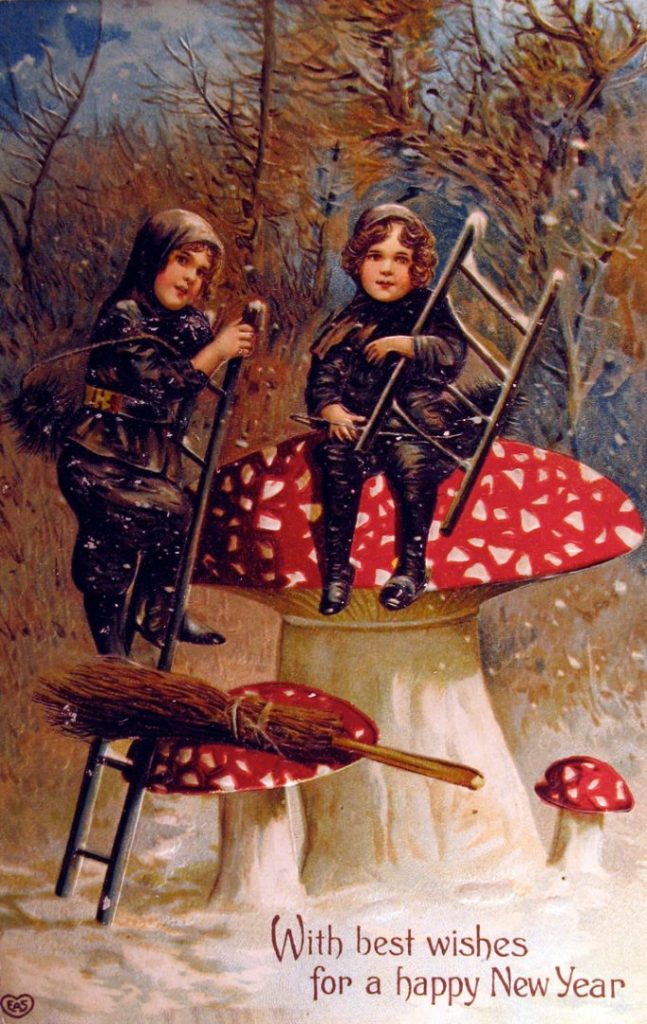


Quite widespread association of A muscaria with Christmas folklore may be rooted in the mushroom’s historic narcotic use by tribal shamans in Lapland, Finland and Siberia (see here). Consider now the following:
- The shamans moved around by means of Reindeer-drawn sleds in winter. Reindeer are known to eat and become intoxicated by Fly Agaric, one of the most common psychedelic sensations of which is flying – hence Santa Claus’ mode of transport.
- Living in such a cold region the shamans would wear thick layers of clothing dyed red and white that matched the mushroom’s colouration – hence Santa’s suit.
- The indigenous cultures that consumed Fly Agaric were all in far northern regions – hence Santa living at the north pole.
“Curiouser and curiouser” as Alice herself might have said in Wonderland. Certainly no fungus may ever have captured the popular imagination and held its attention quite so much as the most attractive and enchanting Fly Agaric.
Footnote: In both 2022 and 2023 the bracken in which the wildlife spectacle of this post occurs was cut by WODC at the height of the Fly Agaric season, destroying all the fruiting mushrooms in “full bloom”. WHY? Surely this is a local treasure that should have been left for visitors to enjoy, whatever it says on the job sheet.




